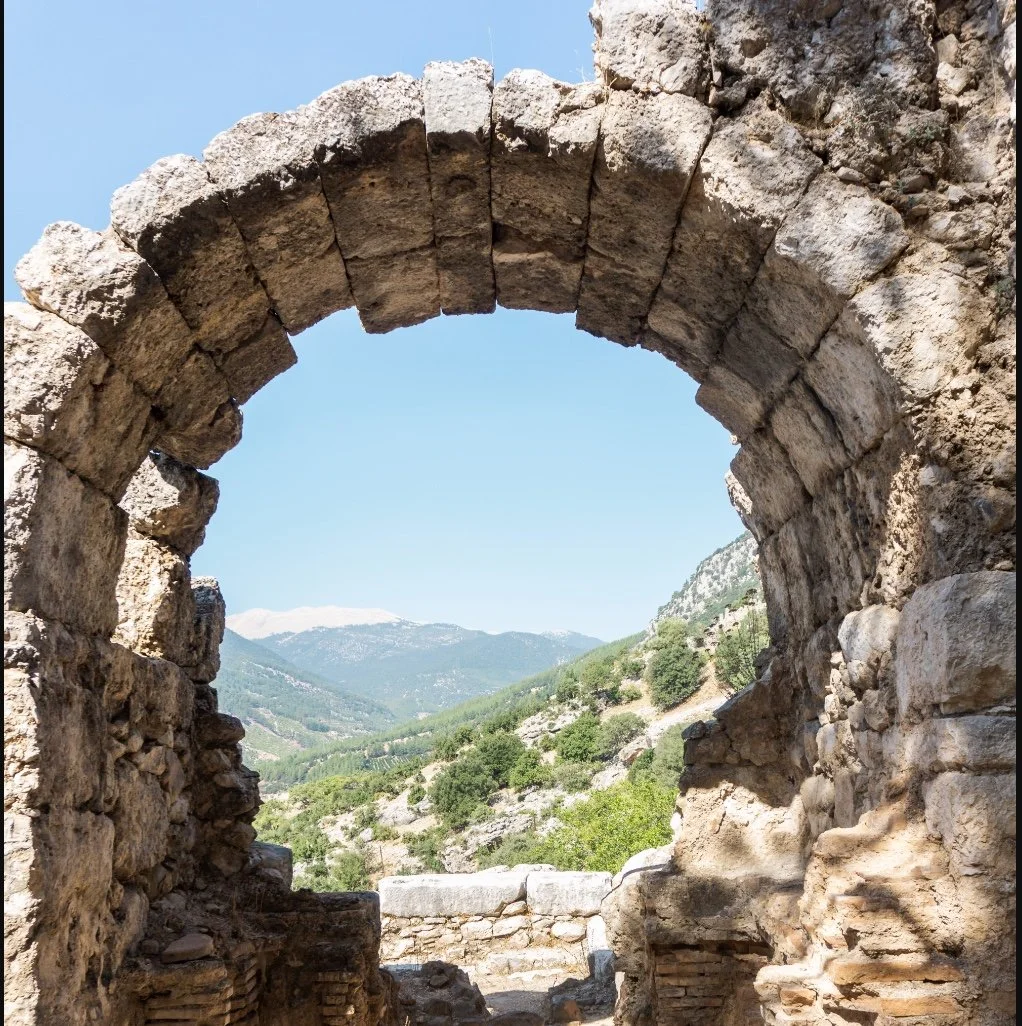
The Moon Gate
The Moon Gate
Designer and Project Manager: Gray Edgerton
History, Culture, and Relevance in Modern Serenity Gardens
The Moon Gate is a symbol of beauty, tradition, and spirituality with origins steeped in Chinese culture. Its graceful, circular design has transcended time and borders, finding relevance in various landscapes around the world. Adding a Moon Gate to the Serenity Garden in Charlotte, North Carolina, would not only enrich its visual appeal but also resonate with themes of harmony, balance, and inclusivity.
Historical Origins of the Moon Gate
The Moon Gate dates back to ancient China, where it emerged as an architectural element in classical gardens during the Tang (618–907 CE) and Song (960–1279 CE) dynasties. These dynasties marked an era of artistic and philosophical flourishing, with garden design reflecting deep connections between humans, nature, and the cosmos. A Moon Gate, or "yue men" in Chinese, was often placed as an entryway or transition point within gardens. The circle, a symbol of perfection and unity in Chinese culture, evoked the natural cycles of the moon and the heavens.
Moon Gates were initially exclusive to the gardens of the elite, symbolizing wealth, sophistication, and a cultivated appreciation for art. Over time, their use expanded to public spaces, where they became accessible to broader communities, maintaining their spiritual and cultural significance.
Religious and Spiritual Significance
In Taoist and Confucian philosophies, the Moon Gate embodies the harmonious interaction of opposites, aligning with the principles of yin and yang. Its circular shape represents wholeness, eternity, and the cyclical nature of life, resonating with humanity's place in the larger cosmos. Passing through a Moon Gate was often seen as a symbolic act of leaving behind the mundane and stepping into a realm of serenity, enlightenment, or renewal.
In traditional Chinese beliefs, the Moon Gate is also linked to lunar deities, such as Chang’e, the Moon Goddess, emphasizing themes of love, immortality, and introspection. These associations made the Moon Gate not just an architectural feature but also a spiritual marker.
Cultural Context at the Time of Creation
The construction of Moon Gates during China's classical periods coincided with an era of garden design that sought to recreate natural landscapes within confined spaces. Gardens were seen as microcosms of the universe, blending water, plants, rocks, and architectural elements to reflect a balanced world. The Moon Gate fit seamlessly into this philosophy, offering not just a physical entry point but also a frame through which visitors could view carefully curated scenes.
In a time when art and philosophy deeply influenced daily life, the Moon Gate stood as a testament to the cultural emphasis on aesthetics, spirituality, and the interconnectedness of all things. It was as much a practical structure as it was a meditative tool, inviting reflection and mindfulness.
Relevance in the Charlotte Serenity Garden:
Charlotte’s Serenity Garden, a space designed to foster tranquility and community, greatly benefits from the inclusion of a Moon Gate. Here's why:
Aesthetic Appeal: The Moon Gate's elegant design adds a focal point to the garden, drawing visitors into its space. It enhances the garden's visual harmony, creating picturesque views that invite quiet contemplation.
Cultural Enrichment: As a multicultural city, Charlotte thrives on celebrating diversity. The Moon Gate introduces an element of Chinese heritage and philosophy, symbolizing inclusivity and respect for global traditions.
Spiritual Connection: The Moon Gate aligns perfectly with the garden’s goal of fostering peace and introspection. Walking through the gate could be a symbolic gesture of leaving behind worries and entering a space of mindfulness and renewal.
Timeless Relevance: The themes of unity, balance, and harmony embodied by the Moon Gate are universal. In a world often marked by division, such a symbol can serve as a gentle reminder of humanity’s shared journey.
The Moon Gate is more than an architectural structure; it is a bridge between the past and present, the material and spiritual. Its addition to the Serenity Garden in Charlotte, NC, would enhance the space both aesthetically and philosophically, making it a destination that celebrates beauty, culture, and the enduring values of harmony and unity.
Artist: Gray Edgerton
From The Artist
I love the concept of a “portal!” Placement was oriented to the land the house and the garden. We had the idea for a year and I chose this spot because of the view of the garden. We had to build a place to house it. So we have created our new Asian Gardens. Everything here has an Asian theme and origin.
Mythologically the stones have power. The weight of the stones holds everything together. Knowing I was building a portal, a “Star Gate”, I put so much intention for where I wanted to be when I passed through this portal. What did I want my life to look like and feel like on the other side of this portal. We got the last stone in place and I took the wood bracing out and suddenly I heard the stones singing. I believe it was the power of the stones coming to life in their new belonging and purpose.
I chose the 6 brown stones and 12 gray stones to match it’s surroundings. Yet even the numbers have mystery and meaning. This Moon Gate is a threshold. Thresholds are physical representations of any metaphorical threshold. We cross these thresholds throughout our life in small ways and significant ways. Charlotte Serenity Garden now has it’s own threshold in it’s asian garden.










